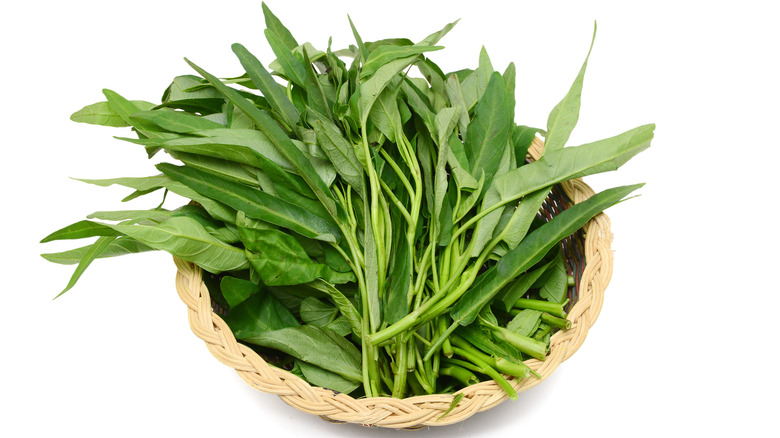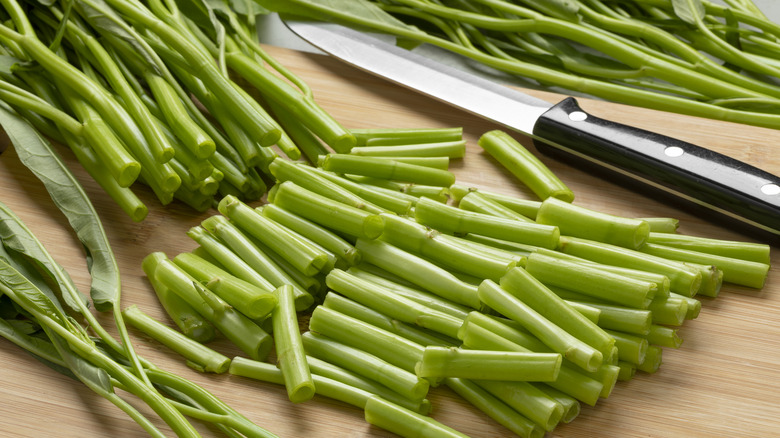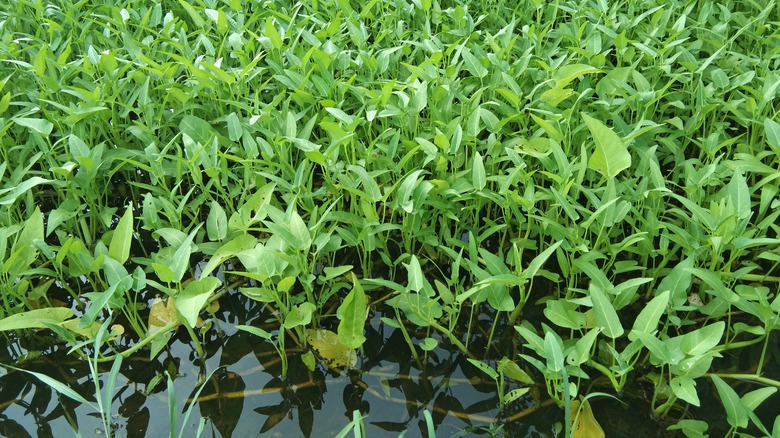The Type Of Spinach That Can Actually Cause Chaos
In the wrong context, anything can be bad. Consider water. When we drink water, it is not only delicious but vital to our very survival. When we breathe water ... not so much. Context is everything, and humanity is learning that lesson the hard way through the problem of invasive species: plants and animals that escape their indigenous territories with catastrophic results. National Geographic notes that not all foreign species are considered invasive, and many of our most popular foodstuffs, such as wheat, rice, and tomatoes, are grown outside of their native lands without consequence. A species is only considered invasive when it spreads rapidly and harms native plants and animals. Unfortunately, this almost always happens due to human activities.
The National Wildlife Federation reports that roughly 42% of all endangered and threatened species are jeopardized by invasive species. These are typically spread as an unintentional result of human activities as we travel across the globe. Aquatic species can be transported in the ballast water of boats, insects can hitch a ride in the wood of shipping pallets, and in some cases, household plants and pets can escape into the wild. A particularly dramatic example is the Burmese python, some of which escaped into the Florida Everglades to prey upon native wildlife. The thought of giant snakes on the loose would disturb most people, but invasive species aren't always so superficially scary. Pants in particular can sneak under the radar, which is exactly what happened with water spinach.
Spinach vs. water spinach
Americans who see the word "spinach" might think of the common leafy green that populates salads and makes cartoon sailor men swole. Water spinach is quite different, and despite the name, it is not actually related to regular spinach. According to Specialty Produce, water spinach (scientific name: Ipomoea Aquatica) is native to southeast Asia, where it goes by many names. In Chinese, it is known as "Ong Choy," and "Kong Xin Cai." The Japanese call it "Yosai" or "Kusinasi." In Malay, it goes by the name "Kangkung" or "Kangkong," while the Thai call it "Phak Bung." It has long, narrow leaves and hollow stems which are traditionally harvested while the plant is young to ensure a sweet taste and tender texture.
Water spinach has been a staple of Southeast Asian cuisine for centuries. According to the United States Department of Agriculture, its cultivation dates back to A.D. 300, during the Chin Dynasty, and was used early on as a treatment for anemia due to its high iron content. It even factors into parts of Chinese mythology. The South China Morning Post relates a 16th-century legend about a government minister forced by the king to cut out his own heart. It was said that water spinach was the only plant that grew in his tomb, earning the name "empty-heart vegetable," which also reflects its hollow stems. Today, water spinach is commonly used in stir-fries, as well as regional specialties such as Vietnamese water spinach salad.
The problem with water spinach
While it is a staple item in many Southeast Asian kitchens, water spinach is considered an invasive species in the United States. If a single specimen of the plant gets into the local waterways, it can propagate rapidly, growing up to four inches per day. The Florida Fish and Wildlife Conservation Commission explains that water spinach grows in tangled masses that block out native plants and fish. It can also obstruct drainage and flood canals and create dense canopies over ponds and basins that turn the water into stagnant breeding pools for mosquitos. The United States Department of Agriculture notes that controlling water spinach is extremely difficult because it is resistant to legal herbicides.
Because of its potential to wreak havoc on local ecosystems, NPR reports that water spinach is illegal in most states. This is a point of frustration for some Asian American cooks because it eliminates one of the main ingredients in many of their traditional recipes. Consequently, a black market has arisen, with some people illegally growing water spinach while others press state governments for legal avenues to procure it. In March of 2022, Georgia joined California, Florida, Hawaii, and Texas in allowing the cultivation and sale of water spinach by those with a state permit. Growers face strict regulations, and Gary W. Black, the commissioner of the Georgia Department of Agriculture, says that the measure aims to shift the demand for water spinach to legal sources only.


